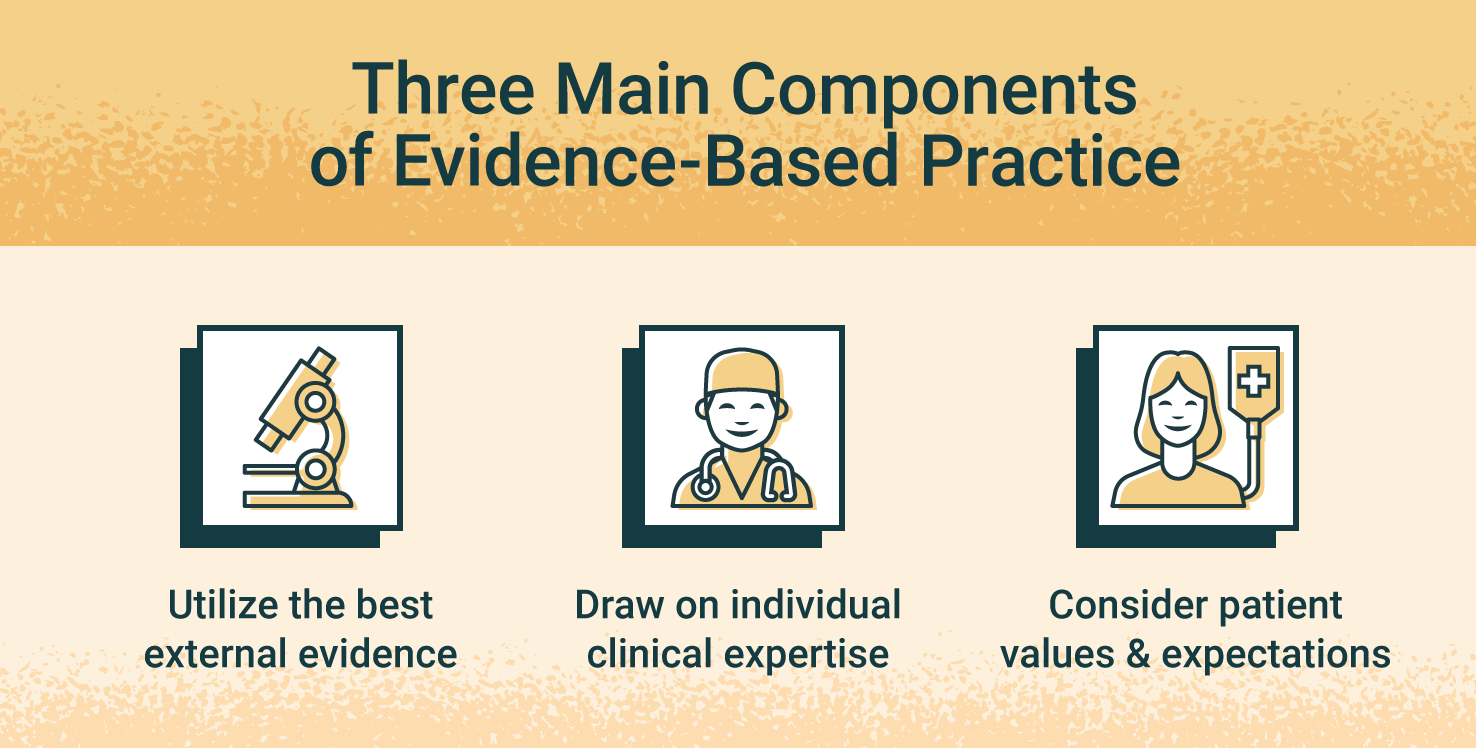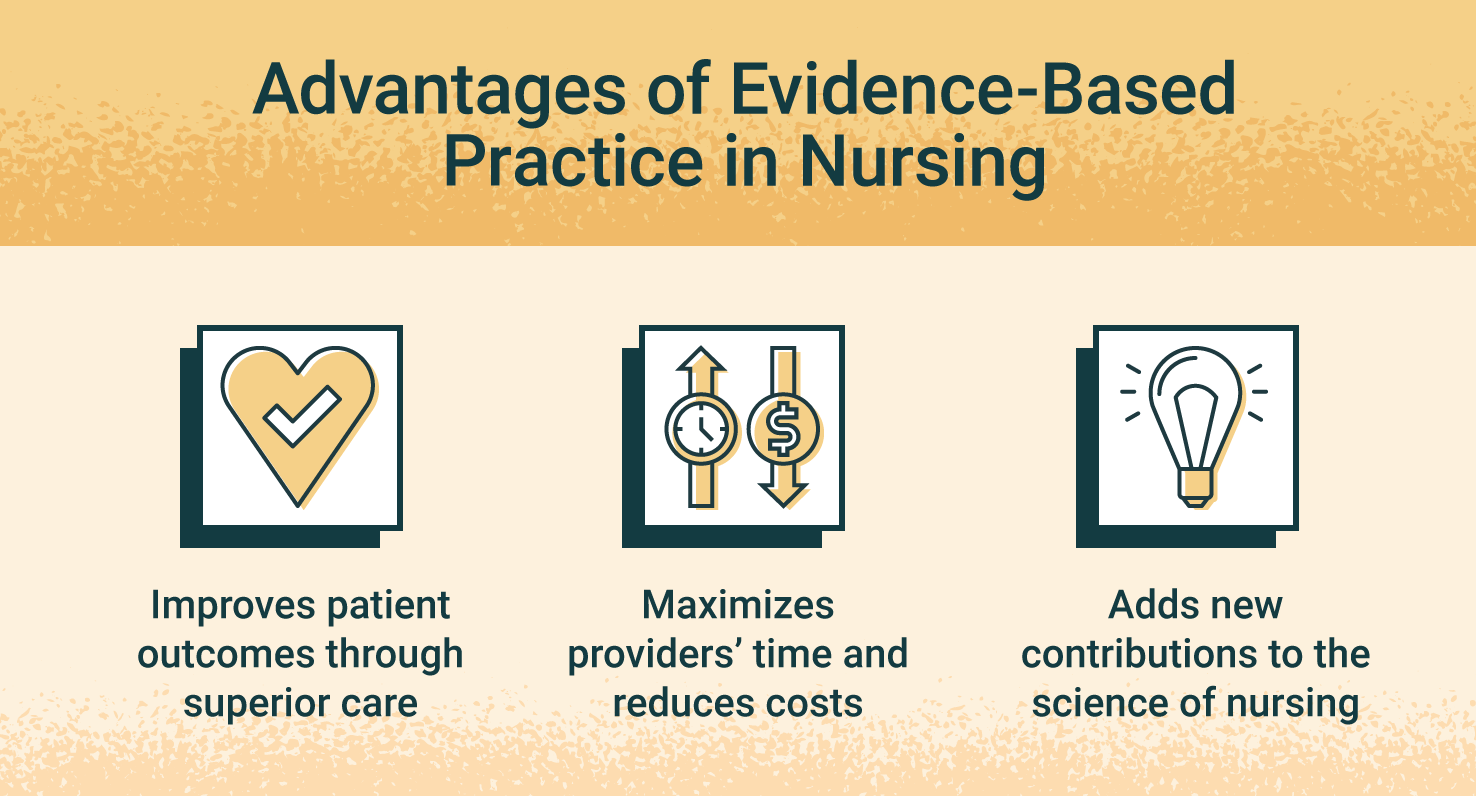 Students write evidence-based practice nursing papers – EBP papers – to boost their self-assurance, spark an interest in further study, improve their critical thinking and creative problem-solving abilities, and prepare them for real-world work.
Students write evidence-based practice nursing papers – EBP papers – to boost their self-assurance, spark an interest in further study, improve their critical thinking and creative problem-solving abilities, and prepare them for real-world work.
An evidence-based practice nursing paper is required coursework for all nursing majors. EBP papers typically involve change management papers that advocate for procedures to enhance quality. Understanding the entire writing process will help you avoid common pitfalls.
Evidence-based practice papers necessitate more critical thinking, research, and reading than traditional nursing papers and essays. We recognize that writing a high-quality, scholarly nursing paper based on evidence is difficult and time-consuming.
How to Write a EBP Nursing Paper
An evidence-based practice (EBP) paper is a type of academic paper that is used to present research findings and demonstrate the effectiveness of a specific treatment or intervention. Here are some steps you can take to write an EBP paper:
- Choose a topic: Choose a topic that is relevant to your field of study and that you are interested in.
- Conduct a literature review: Gather and review relevant research articles, books, and other sources on your topic. This will help you understand the current state of knowledge on your topic and identify gaps in the literature.
- Develop a research question or hypothesis: Based on your literature review, develop a clear and specific research question or hypothesis that you will investigate in your paper.
- Design your study: Determine the type of study you will conduct (e.g., randomized controlled trial, case-control study, etc.) and the specific methods you will use to collect and analyze data.
- Collect and analyze data: Collect and analyze data in accordance with your study design. Use statistical methods to analyze the data and test your research question or hypothesis.
- Write the paper: Write the paper, including an introduction, literature review, methods, results, and discussion sections.
- Use evidence and citation: Use evidence from your literature review and data analysis to support your conclusions. Be sure to cite your sources correctly and use appropriate formatting guidelines.
- Proofread and edit: Review your paper for grammar, punctuation, and spelling errors. Make sure the paper is well-organized and easy to read.
- Reviewed by peers: Get feedback from peers or professors on your work, this will help you to improve your paper.
- Finalize and submit: Make any necessary revisions and submit your paper for grading or publication.
It is important to note that the instructions and format of an EBP paper may vary depending on the specific guidelines of your course or institution. Be sure to consult with your instructor for specific requirements. You can view a sample EBP Paper here.
Systematic Review in EBP Papers
Evidence-based practice (EBP) in nursing typically takes the form of a systematic review, in which research is evaluated according to a predetermined set of criteria to ascertain whether or not it can be used as a benchmark in actual clinical practice. For efficient change management, implementation, and institutionalization, the systematic review aids in making sense of the vast amounts of data at hand.
Elements of a EBP Nursing Paper
- Evaluation of the need for change: This requires coming up with a research question or hypothesis to fill the voids left by the current state of practice.
- Location of the best evidence: The next step is to evaluate the evidence or peer-reviewed articles for their credibility, reliability, and relevance to nursing practice, considering the different levels of available nursing resources.
- Consolidation of evidence: Evidence is compared and contrasted to establish similarities and differences and guide decision-making about the best course of action.
- Change Design: The next step is to make a positive change based on the evidence gathered from synthesizing the available evidence. The process also includes developing a strategy for introducing the change in a healthcare facility.
- Change Implementation and Evaluation: The new process is put into practice after the design phase, with the help of change advocates like nurse leaders and individual nurses. The success of the change management strategy can be ensured by employing a variety of change management theories.
- Change Integration: After the new evidence is used to implement change, it is adopted through policy or guidelines within clinical settings. Moreover, it entails constantly striving to improve to perform at the highest possible level.
How to Start Writing an EBP Nursing Paper
Once you have been tasked with writing an evidence-based paper, a student must figure out where and how to start writing it. Below are 3 steps on how to start writing a EBP nursing paper.
-
Pick the Topic
When deciding on the topic of your EBP paper, you can take advantage of various approaches. Coursework, scholarly articles, assigned readings, and completed projects in the past can all serve as inspiration. Many potential topics for an evidence-based practice paper can now be found online. The topic you select should, however, reflect your personal interests and passions in nursing. For instance, if you want to use technology to increase efficiency in the emergency department, you should learn about electronic health records (EHR) and health information technology (HIT). First, evaluate the assignment and make some notes; then, decide on a possible topic.
-
Consult with your Professor
Collaboration and feedback are essential in nursing education, just as they are in nursing practice. Consequently, after settling on a unique, evidence-based practice topic, you should schedule a meeting with either the writing center or the professor to confirm your selection. An evidence-based practice proposal may be required of you by your instructor. The nursing problem you are trying to address, the method you’ll use to implement the necessary changes, and why it’s necessary should all be detailed in the EBP proposal. Assuming its persuasiveness, you will be permitted to proceed. Otherwise, the evidence-based practice nursing proposal will need to be revised.
-
Gather Supporting Evidence
There can be no logical argument in the absence of supporting evidence. Your EBP paper’s thesis statement will need to be supported by evidence, so you’ll want to dig deep into online and print sources for that information. After formulating a statement of the problem and crafting a preliminary outline of the thesis, you should thoroughly evaluate your sources to determine which ones best back up your claim. An annotated bibliography or critical analysis of each article or the primary article used to support your evidence-based practice paper may be required by your instructor. The use of an evidence evaluation table is a common method. Keep in mind that there are two kinds of sources to choose from: primary and secondary. Databases like PubMed, EBSCO, UpToDate, TRIP Database, OVID, The Cochrane Collaboration, and CINAHL are great places to find primary and secondary sources.
Furthermore, you can trust gov.org and .edu websites as credible sources of information. Non-governmental organizations (NGOs), government agencies, and other professional and specialized groups can all serve as research springboards. They are invaluable in terms of statistics, epidemiological data, and additional context. For a study to be considered well-conducted, it must provide evidence supporting its central claims, including the research question, hypothesis, and thesis statement.
How to Select Credible Sources for a EBP Nursing Paper
Regarding academic papers, there are two types of information sources: primary and secondary. An EBP paper relies exclusively on the results of primary research that have already been published, as opposed to collecting and analyzing real data as students do for qualitative and quantitative or mixed methods thesis, dissertation, and research papers. This is why a nursing student must rely solely on credible, reputable sources. For your EBP paper, consider these guidelines when choosing a source:
- A research article’s credibility increases if and only if it appears in a reputable database or journal and has undergone the rigorous process of peer review. It also is dependent on the strength of the evidence. If the experiment were repeated, would it produce the same results?
- If you’re going to cite a study in your EBP paper, you must ensure it’s up-to-date, relevant, and follows all the relevant research protocols. Does the study actually measure what it claims to?
- The third criterion for research to be included in an EBP paper is that it be scholarly, have verifiable results, and have been published in a reputable journal. Where did you find this study? Does it come from a reputable publication?
- Is it an original study (qualitative, quantitative, a randomized controlled trial, a controlled case study, or quasi-experimental)?
It is normal to dislike writing an EBP paper, not because you don’t understand how to but because the process is rigorous and tedious. If that is the case, there are nursing writing services online, and you do not have to stress yourself. These nursing assignments help specialists can write high-quality EBP papers that will guarantee you A+ grades.
EBP is Patient-Centric/ Patient-Focused
EBP focuses on the patient always. This is referred to as a “patient-centric” approach. During college studies, nursing students will encounter EBP assignments severally. Evidence-based practice (EBP) is a healthcare delivery method that uses the most recent research available to enhance patient health and safety, decrease healthcare costs, and increase consistency in health outcomes. It’s an approach to problem-solving that combines the latest research in medicine with first-hand clinical knowledge and the individual priorities of each patient.
History of Evidence Based Practice
Although evidence-based practice (EBP) has been widely incorporated into modern nursing practice since the 1990s, it has deep historical roots. Despite the widespread belief that physician Archie Cochrane in the 1970s was the pioneer of EBP (then known as evidence-based medicine), some nurse researchers place its genesis with Florence Nightingale. Her work to improve patient outcomes in the face of unsanitary conditions in the 1800s is often cited as the first example of evidence-based practice (EBP).
Components of Evidence Based Practice
 Applying or translating research findings into daily patient care practices and clinical decision-making is known as evidence-based practice (EBP). EBP also involves considering the patient’s circumstances and preferences by combining the best available evidence with clinical knowledge and expertise. Consistency in application increases the likelihood of successful patient outcomes.
Applying or translating research findings into daily patient care practices and clinical decision-making is known as evidence-based practice (EBP). EBP also involves considering the patient’s circumstances and preferences by combining the best available evidence with clinical knowledge and expertise. Consistency in application increases the likelihood of successful patient outcomes.
Using EBP means switching from inefficient, unproven care delivery methods to those proven effective in clinical trials. Professionals in the medical field who employ EBP must be adept at determining the relevance of research to their patient populations.
Research vs. EBP
Many people mistakenly assume that EBP and academic research are interchangeable. That is not true! Although they share some similarities, their functions are distinct. Research is done to either add to or verify a body of theoretically-based knowledge. To conduct research, one must ask focused questions and use methodical, scientific methods to try to determine the answers or validity of their hypotheses. Researchers must follow the steps of the scientific method for their findings to be trusted.
Compared to RCTs and randomized controlled trials, EBP focuses on translating scientific evidence into practical clinical practice and decision-making applications. EBP advocates utilizing the most recent and relevant research to provide the best possible care for patients. While research is often cited as a source of the best evidence, EBP considers the findings of studies, the clinician’s and healthcare team’s experience, and the patient’s values and preferences.
Importance of Evidence-Based Practice to Nurses
EBP is an enabling method of care that equips nurses to effect positive change in patient outcomes. Embodying a problem-solving and inquiry ethos, it starts with observation and the formation of a question. It then moves on to diligently pursuing an answer through research and incorporating that answer into care. Moreover, in an ideal situation, EBP leads to better conditions and outcomes locally and globally as the results are disseminated.
Nurses who practice evidence-based practice serve as a bridge between the vast literature on the subject and their field-based expertise. They can bring about positive change for their patients, communities, and the world by standardizing care and reducing medical errors.
In the end, EBP allows nurses to collaborate with other clinicians and healthcare professionals to actively shape nursing practice. It entails improving healthcare from the inside out, as Nightingale advocated.

Many practices that fall outside of evidence-based practice (EBP) persist anyway. Many such interventions and protocols, based on tradition rather than evidence, are ineffective at best and harmful at worst. With EBP, you can avoid rising expenses, mediocre treatment, and unsatisfying outcomes.
An integral part of the University of Maine at Fort Kent’s (UMFK) online RN to BSN program is equipping students with the self-assurance and skillset required to evaluate medical literature and the discretion required to design and implement a trial.
Those who master the challenges of EBP will be in a prime position to help lead the healthcare industry into the future. By earning your Bachelor of Science in Nursing (BSN), you will be well on your way to using evidence-based methods to transform healthcare systems worldwide.
